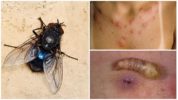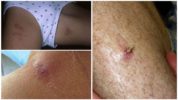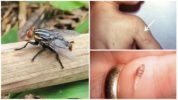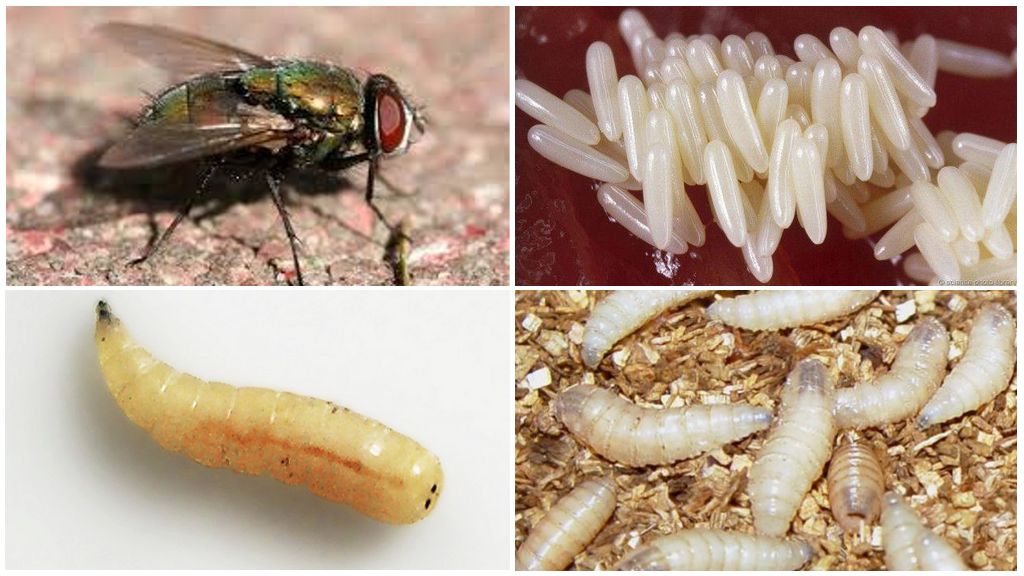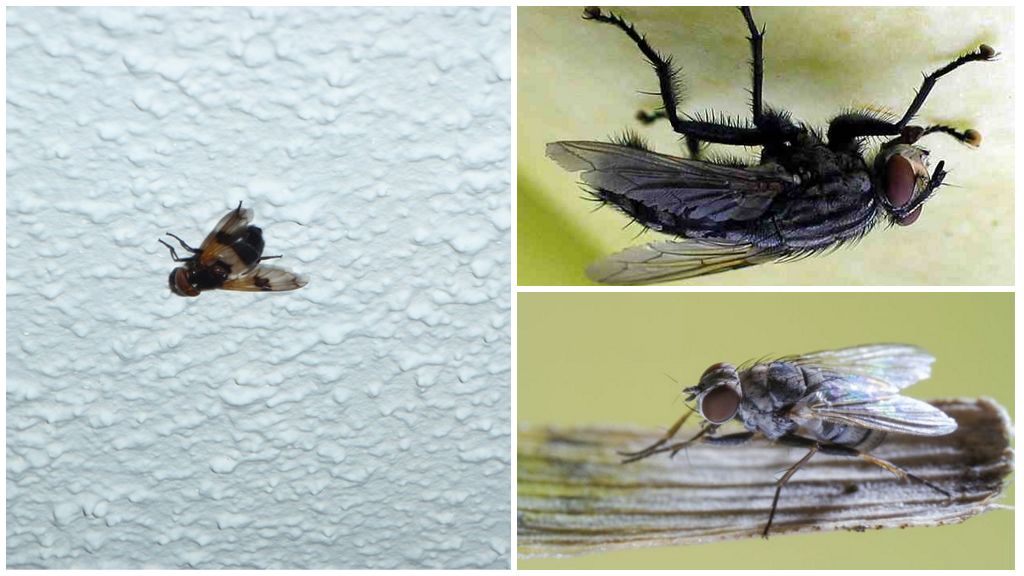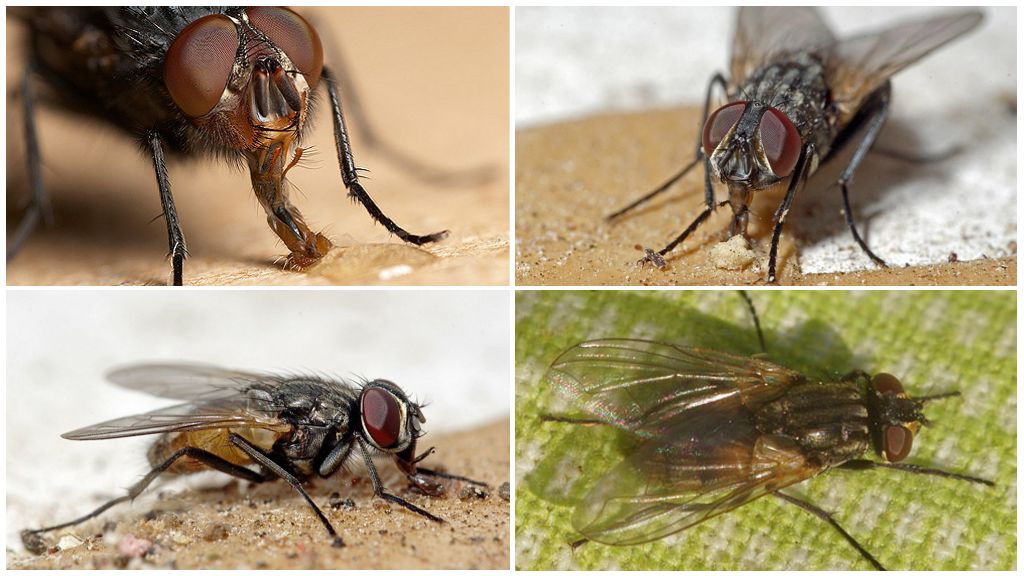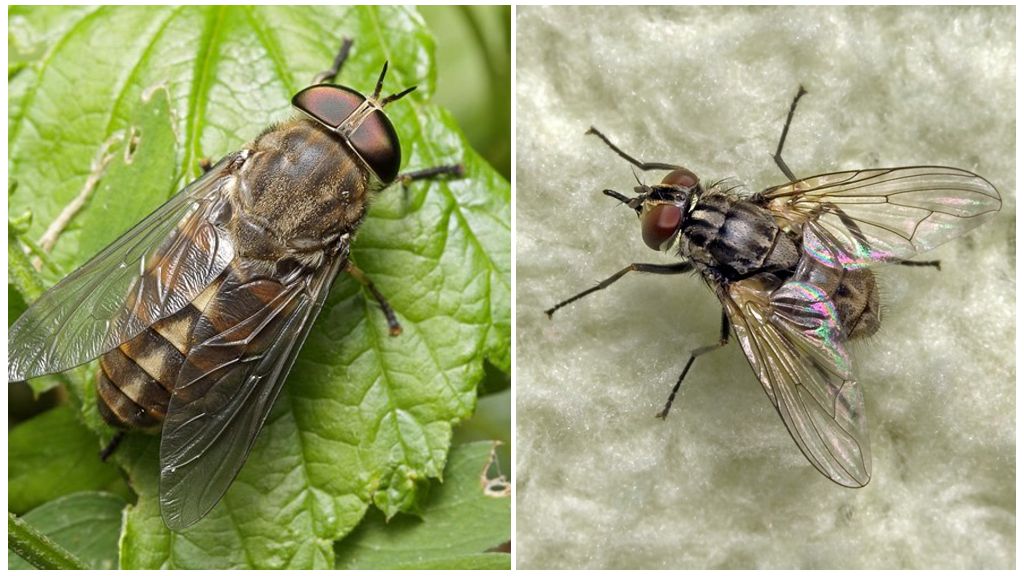- Random miaz
- Facultative miases
- Subcutaneous mias
We are used to treat flies as an annoying, but harmless hindrance. In fact, even familiar to all gray and blue flies far from being as harmless as it might seem. Even more dangerous are gadflies, which also belong to large parasitic flies. All these insects cause diseases, united by the common name "miases". A disease occurs when flies lay larvae in humans, and parasites invade under the skin. There are few viviparous among this group of insects, the rest lay eggsand larvae emerging from the eggs penetrate the skin. Although there are "viviparous" flies. Sometimes a person organizes his own miias.
Types of miases and flies causing disease
Larvae of a fly in the human body can be found in the most unexpected places. Most often, myiasis occurs after gadflies lay their eggs. The development cycle of these flies involves the development in the body of the host, which can be not only a large animal, but also a person.
On a note!
All videos and photos on which larvae are removed from under the skin relate to damage by gadflies.
Miases can be random, optional and obligate. The type of myiasis depends on what do flies eat in nature.
Random
Diseases cause flies, usually laying eggs in rotting organics. A person becomes infected with these larvae by accident, swallowing them with food or putting on underwear. Mostly eggs swallowed by man dissolved by gastric juice, but sometimes maggot can penetrate the intestines, causing intestinal myiasis. If the fly has laid on wet linen, the larva can penetrate the urethra, causing genitourinary myiasis.
Random abdominal myiasis causes many flies:
- blue meat (Calliphora vicina);
- room (Musca domestica);
- green meat (Lucilla sericata);
- Brownie (Muscina stabulans);
- small room (Fannia canicularis);
- Drosophila (family Drosophilidae);
- cheese (Piophila casei).
These are not the only, but the main types of flies that affect humans.
Interesting!
A person usually arranges intestinal miaz with larvae of cheese flies by himself, eating a dubious delicacy: rotten cheese infected with a cheese fly.
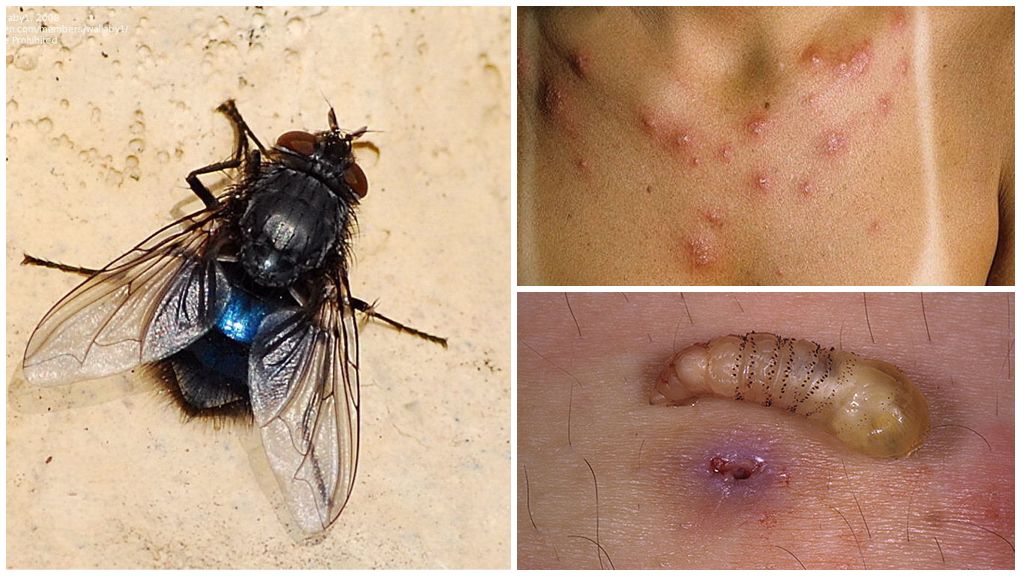
Intestinal myiasis
In addition to these species, almost any fly can cause intestinal myiasis. But the most serious form of this type of disease takes on a lesion. Drosophila and cheese flies.
Symptoms
- irritation and inflammation of the intestinal mucosa;
- abdominal pain;
- diarrhea with larvae;
- exhaustion;
- sharp pains in the anus;
- vomiting with larvae.
On a note!
Adult maggots reach a length of up to 1.5 cm. Treatment is prescribed after diagnosis and is carried out using anthelmintic drugs against nematodes.
Genitourinary miasis
After the larvae penetrate the human urethra, severe pain in the urinary canal begins, often with urinary retention. For treatment, urethral lavage is performed.
This disease can be caused by any kind of diptera, but tourists from Africa who travel on safari suffer especially from it. In the Congo area, a mangrove fly lives, which lays eggs on moist vertical surfaces.
The local population knows about this feature of the insect and dries clothes, laying them horizontally. Tourists who have not delved into the reason for the occurrence of such a custom hang their clothes on ropes. And they get abdominal urogenital myiasis.
Facultative miases
This group of diseases is caused by flies that normally breed on the corpses of animals. In the literal sense of the word, they cannot lay eggs in a person. Insects masonry either in open wounds, or on intact skin, in the ears or in the nose.
On a note!
Flies do not have an ovipositor that can pierce the skin. Therefore, all photos of a fly laying larvae under the skin are processed by Photoshop.
The hatched larva itself penetrates the epidermis and develops there for 2-3 weeks. Finally developed maggots leave the body and fall to the ground. There they pupate and, after some time, adult individuals emerge from the pupae.
Depending on the place where the masonry was made, the larvae penetrate not only under the skin, but also in the eyes, nasal cavities and skull. In this case, the expression "eat the brain" ceases to be figurative. Maggots that penetrated into the cranial cavity feed on brain tissue.

If the larvae of a fly get into the eye, their removal is possible only surgically. The easiest option for ophthalmomyiasis is the penetration of maggot into the conjunctiva. When penetrating the eyeball, the disease may result in loss of the organ of vision.
On a note!
In the USA, cases of penetration of maggots by sulfur were noted meat flies deep into the body’s internal tissues.
Removal of larvae of flies from under the skin, from the nose and eyes is possible only surgically.
Why do random and optional miases occur?
The main cause of these types of illness is common unsanitary conditions. Neglect of personal hygiene and cleanliness of the room leads to the reproduction of flies, which sooner or later will masonry on humans.
Obligatory miases
Called by flies, initially parasitizing on warm-blooded organisms. Their other name is gadflies. Breeding cycle in different individuals, it may include parasitism of maggots in the stomach, sinuses or skin.
The gastric gadfly sticks eggs to the forelimbs of herbivores. When an animal scratches a leg, it inadvertently swallows eggs, which begin to develop in the gastrointestinal tract. The eggs of the gastric gadfly do not die in the intestines, but a person has little chance of contracting these parasites. They treat the disease with planned deworming of animals. The person also helps standard anthelmintic drugs.
The subcutaneous gadfly usually also attacks large herbivores, laying 1 egg each on the wool. He does not have a specific attachment point for the egg. The hatched larva embeds into the skin and begins feeding on the host's flesh. Before entering the second stage of development, it makes a subcutaneous route to the area of the back of the animal, where it forms nodule with an opening for air.
A subcutaneous gadfly can also make a clutch per person. In this case, the larvae begin their instinctive upward movement, going not to the back, but to the head of the host.
Important!
Cases of the penetration of this species into the brain of a person with a fatal outcome are known.
Subcutaneous mias
The main cause of this disease is the larvae of subcutaneous gadfly. Signs of subcutaneous myiasis in humans are red swelling with a hole in the middle. The activity of the larva causes pain in the host.
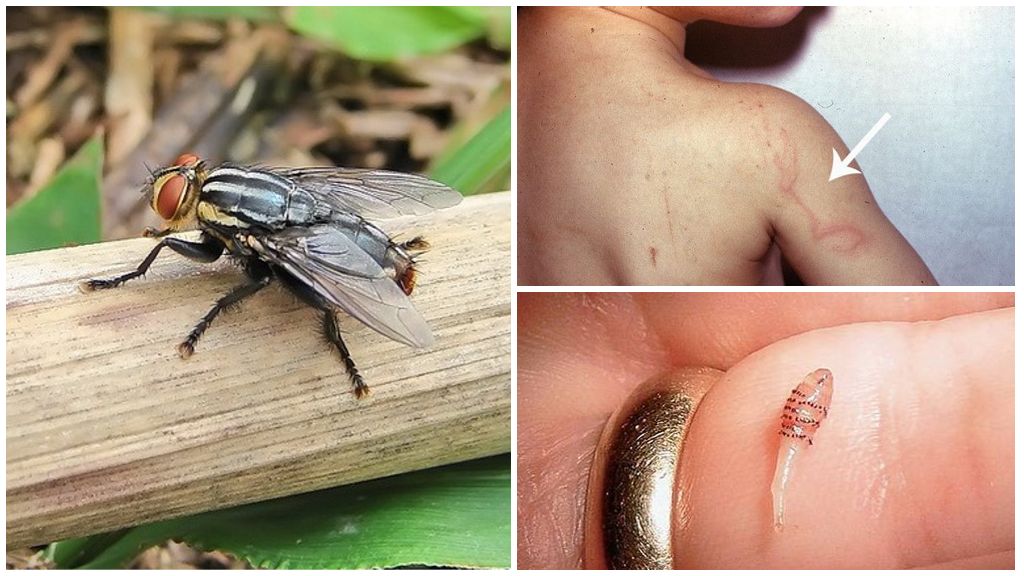
To remove parasites, first close the respiratory opening with an airtight adhesive. In an attempt to breathe, the larva protrudes its head into the hole. After a day, the patch is removed, the crawling larva is caught with tweezers and carefully pulled out. This procedure is carried out only in humans. The animals simply open nodules.
Nasopharyngeal gadfly
These types of parasites are viviparous. They do not lay eggs, but inject ready-made live larvae into the nostrils, mouth and eyes of animals and humans.Once on the mucous membranes, parasites invade the victim’s body, causing abdominal myiasis in the nose and damage to the eyes and mouth. Localization of the offspring of the nasopharyngeal gadfly occurs in the frontal and nasal cavities, pharynx, ethmoid bone. These larvae parasitize on the mucous membranes of the eyes and mouth and penetrate the eyeballs.
Wolfart fly
The only insect that is not a gadfly, but "consciously" parasitizes on living organisms. Size 6-10 mm. It lives in warm regions:
- Asian part of the Russian Federation;
- Southern Europe;
- North Africa;
- China.
The sphere of her “interests” includes sheep and man. Can lay eggs on cattle, but much less frequently. Viviparous. It forms 100-200 larvae during its lifetime. As the offspring matures, it plants it on the abrasions and mucous membranes of animals and humans. Masonry is performed on open wounds and genitalia of sheep.
Important!
In humans wolfarth fly affects the ears, eyes, mouth and nose. Larvae feed on living tissues and are capable of eating large areas of muscle tissue.
As a result of the activity of parasites, in addition to pain, suppuration of damaged tissues occurs, including partial death. When dislocated in the nose, insects cause bleeding.
